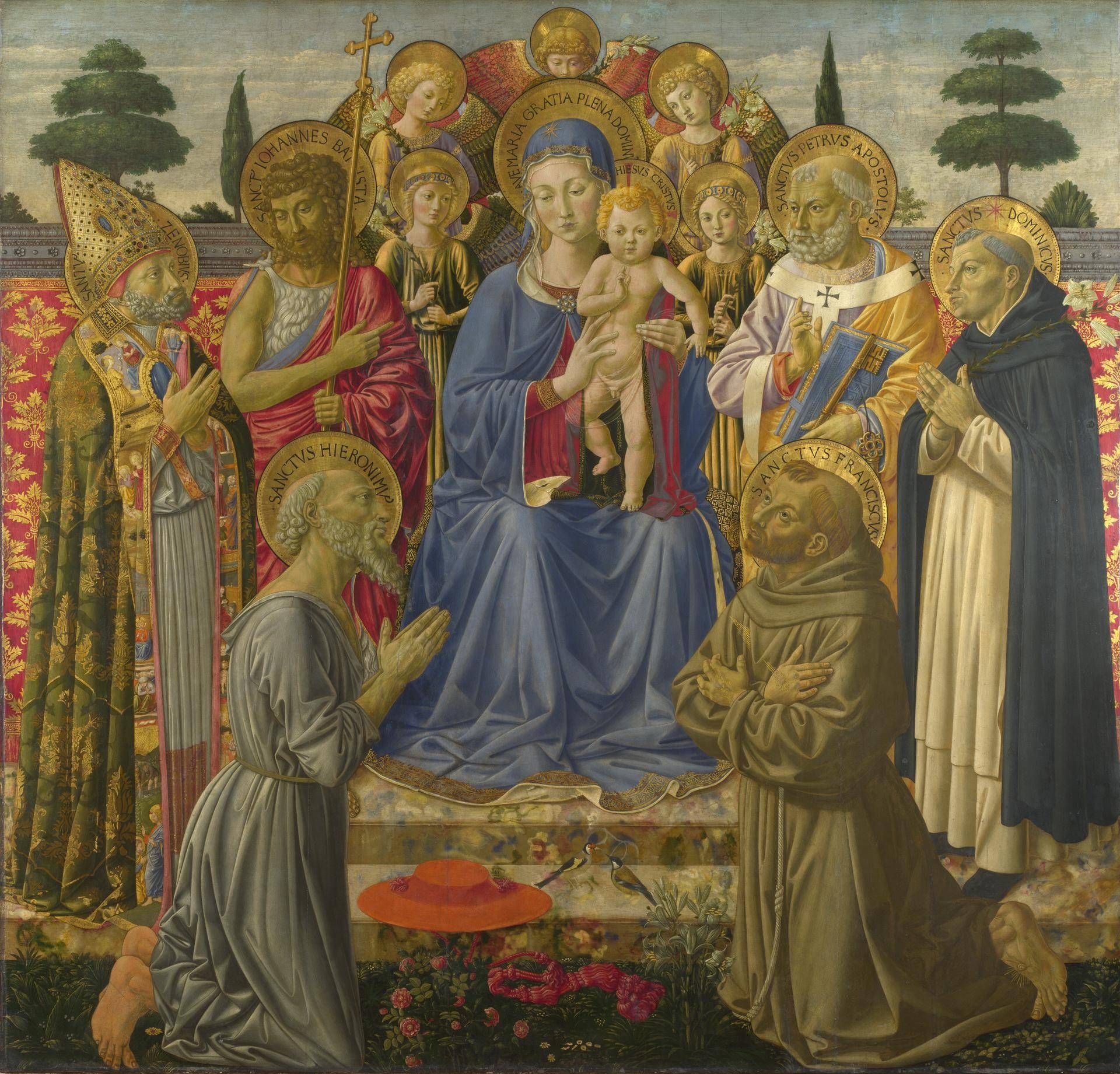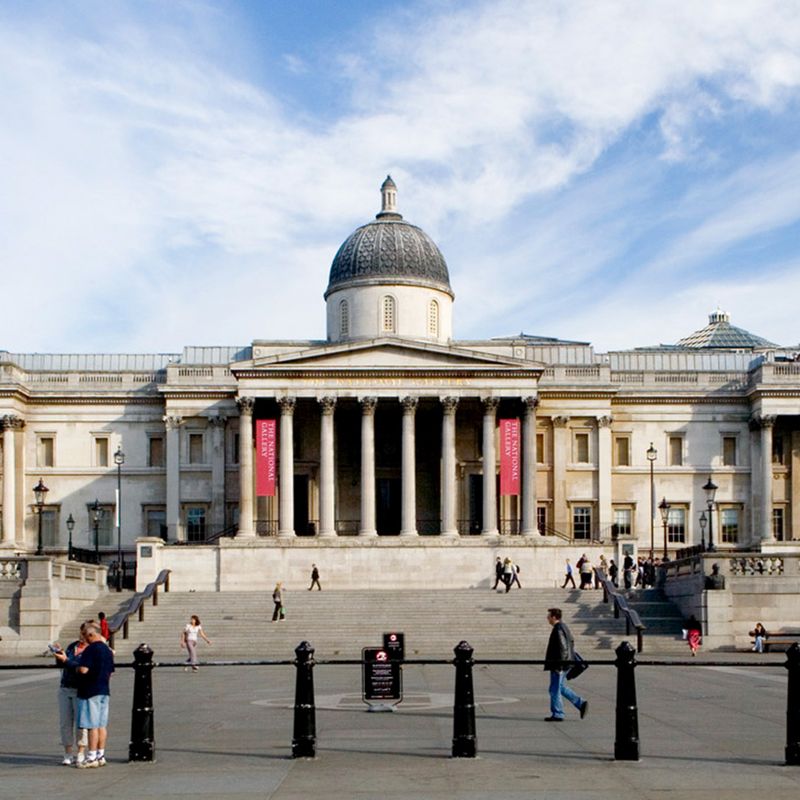
The Virgin and Child Enthroned among Angels and Saints
This is the main panel of an altarpiece made for the meeting room of the Florentine youth confraternity of the Purification of the Virgin and of Saint Zenobius. The confraternity of adolescent boys occupied an important position within the civic and religious life of the city, in part because their meeting room was at the centre of Dominican life in Florence, at the convent of San Marco. This was where Cosimo de' Medici, who essentially ruled Florence, came to pray in private. Members of the confraternity met once a week to celebrate Mass and sing hymns to the Virgin, and took part in religious processions to celebrate the feast of the Purification of the Virgin and the feast of Saint Zenobius.
The saints surrounding the enthroned Virgin and Child were specified in the contract which was drawn up in October 1461 between Gozzoli and Domenico di Stefano, the man in charge of the group's activities. Each saint was included for his significance to the confraternity. Saints Zenobius and John the Baptist - the patron saints of Florence - are shown in the position of honour on the Virgin's right-hand side. Zenobius (whose miracles are depicted in two panels by Botticelli also in our collection) was the city's first bishop. Here he wears his bishop's robes, called a cope, and a mitre (the bishop's hat). The border of his cope is decorated with scenes of the life of the Virgin Mary and Christ. Next to him, Saint John points to the infant Christ. He is shown, as was customary, holding a slender cross and dressed in a furry tunic to represent the camel skin he wore in the desert.
Saint Jerome kneels at the front left. The scholar-saint spent many years in the wilderness in prayer self-flagellating - the practice of beating or whipping yourself in order to express devotion and empathise with Christ's suffering. His inclusion reflects the confraternity's relationship with another devoted to Saint Jerome, which practised self-flagellation. Saint Francis, kneeling opposite, was also well known for his piety and humble lifestyle. The golden rays coming from his hands and feet symbolise the stigmata - the wounds of Christ that Francis developed because of his intense meditation on the suffering of Christ.
Standing on the Virgin's left-hand side are Saint Peter, Christ's disciple, and Saint Dominic, the founder of the Dominican Order. Peter holds a pair of keys in reference to Christ's promise that he would give the keys to the kingdom of heaven to the saint.
The Virgin and Christ Child are surrounded by angels holding lilies, and a crop of the flower grows in the ground at the Virgin's feet. The lily represented purity and was no doubt intended to reflect the feast of the Purification of the Virgin, which celebrated Mary's purification at the temple in Jerusalem after the birth of Christ, according to Jewish rites (Luke 2: 22-24). Treetops are visible behind the wall which encloses the figures and represents the walled garden that was a symbol of the Virgin's purity. The Virgin is shown in a similar setting in Gozzoli's little panel in our collection, and a very similar way of representing the garden appears in a Florentine image of the Virgin and Child which had many variations, one of which is also in the collection.
The altarpiece also included a predella, a series of narrative scenes of the lives of the saints depicted on our panel, which ran along the bottom of the structure. At some point after it was removed from the church it was cut into separate scenes which are now in collections across Europe and America.
Credit: Bought, 1855
1461-2
Egg tempera on wood
161.9 x 170.2 cm
NG283
Image and text © The National Gallery, London, 2025
Where you'll find this

National Gallery
Permanent collection





